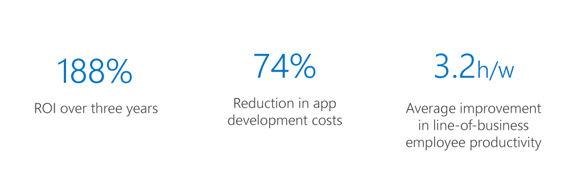I remember the first time I got my hands ‘dirty’ with Microsoft products, mixing together a cocktail of SharePoint, InfoPath, SharePoint Designer and Microsoft Access to build a digital solution that removed the need for paper based forms and manual reporting. It was a huge success, but it wasn’t something I would have been able to do unless I had the experience and knowledge from previous roles and more importantly, a great team of mentors behind me.
Roll on 13 years and I now have Power Apps (and the Power Platform) to play with! Woohoo
As part of my role, I meet with a variety of clients who are either embarking on their Microsoft 365 journey or who are needing a bit of help to make it to the next stage of their digital journey. Whatever stage they are at, every so often, I come across a familiar response from the business leaders even though they can see the potential of what Power Apps and associated technology can bring.
"We don’t know what our users will create"
"How will we be able to support what they make"
"We don’t have the skills to build anything"
"We don’t know where to start"
These are all valid concerns a business should address, the last thing you want is for applications to be built that aren’t aligned to your digital strategy, don’t provide a business benefit or that would increase costs from supportive functions. However, without advocating the use of the Power Platform, businesses are missing out on a huge ROI for their investment in Microsoft 365.

Source: Forrester | The Total Economic Impact of Power Apps
So, how can you roll out Power Apps and the concept of a citizen developer centre within your organisation successfully?
I like to use the concept of a Power House / Academy. It’s a centralised place that staff can go to, to become citizen developers in a secure and compliant way. By implementing all of the below, you will ensure that staff understand the governance applied to Power Apps, have access to training and resources, can share ideas and ask questions to champions and share their own successes with the business.
1) Implement a Power Platform Governance Plan
Without planning for the governance of Power Apps you’re never going to truly satisfy the compliance gods within your organisation. A good governance plan doesn’t have to be a 50 page document, but rather how you’ve considered the environments, monitoring and training for users. Also make it accessible for users to digest by creating bite size content using SharePoint pages.
2) Evangelise with Champions
Power Apps is all about the citizen developer. Yes, you may have some top gun devs in your business but there is a benefit of growing the resource and skills within the organisation
3) Build a community
Build a community that your staff can join that’s all about Power Apps. This can be on Yammer or Teams (if not using Yammer). It will allow staff to share ideas, ask questions and share successes, thus driving adoption. Get your champions to help promote the community and award badge / gamification for participation.
4) Ensure users have access to training
As part of your Power House, you want to ensure staff have access to available training. Training can be provided in a number of ways such as live demos from your champions, App in a day events, Hackathons and more.
5) Share the good
When applications are deployed within the business, share the success openly with the organisation to help drive awareness and to promote the use of these tools. It will help spark ideas from within and ultimately help to deliver digital transformation.
